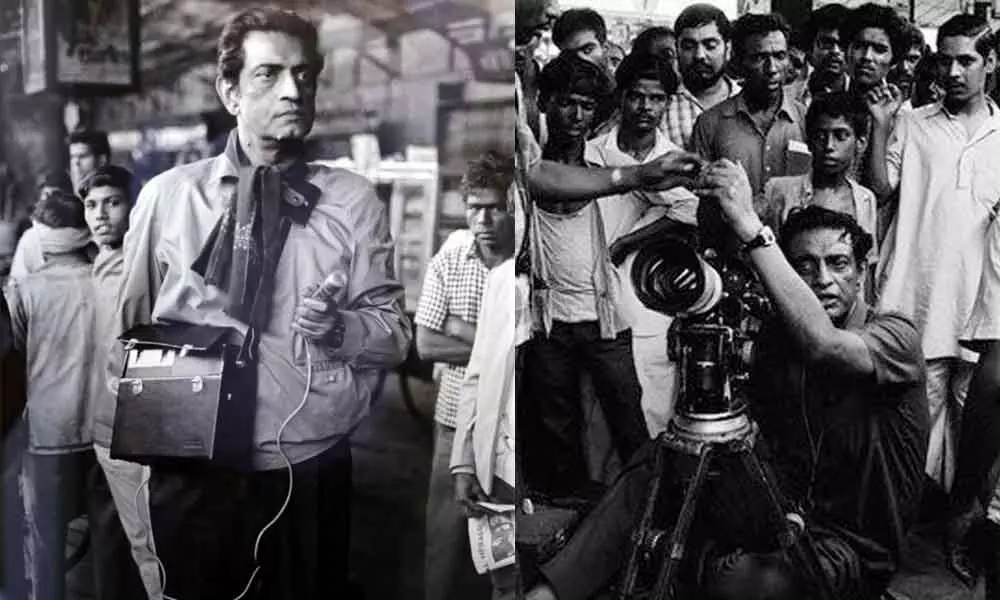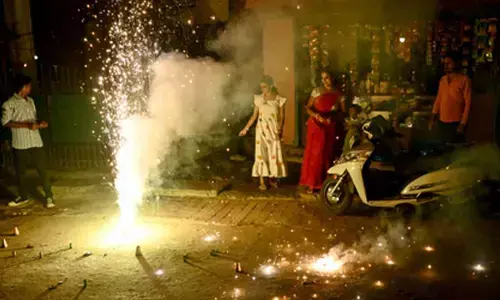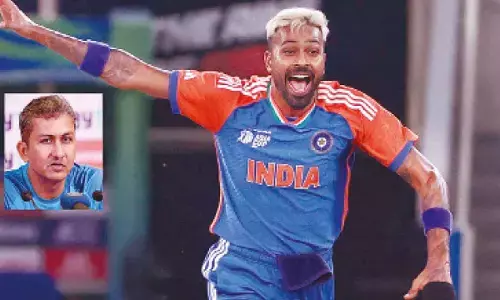Cinema of Satyajit Ray in the time of pandemic

Cinema of Satyajit Ray in the time of pandemic
When "Ray", a four-story anthology based on stories by late Satyajit Ray, drops on OTT later this month, it will be an interesting attempt by a set of new-age artistes and filmmakers at exploring the thought process of an auteur who passed away nearly three decades ago, but who continues to topline any discussion on world cinema if it involves India.
When "Ray", a four-story anthology based on stories by late Satyajit Ray, drops on OTT later this month, it will be an interesting attempt by a set of new-age artistes and filmmakers at exploring the thought process of an auteur who passed away nearly three decades ago, but who continues to topline any discussion on world cinema if it involves India.
For the record, the anthology has two films directed by Srijit Mukherji, and one each by Abhishek Chaubey and Vasan Bala. These are filmmakers who've garnered enough plaudits for displaying finer aesthetics in their works. Still, it could be a challenge bringing to life the writings of Ray -- legions of admirers would settle for nothing less than flawless, and that's something even the maestro's son, the undeniably gifted Sandeep Ray, would vouch for from experience.
Yet, at one level, the essence of Ray doesn't seem like something that is detached from contemporary realities.
His cinema actually highlights many 'isms' that occupy the mindspace of the world today, long before it became socially fashionable to discuss these topics. Many conversations that have opened up now have found resonance in Ray's cinema, directly or indirectly.
We look at a few raging points of discussions in the world today, and how the cinema of Satyajit Ray touched upon these ideas in his era.
THE PANDEMIC
Ray couldn't have possibly foreseen what the world is going through currently, as there was no virus outbreak of the proportion of Covid between 1955 and 1992, the time span when he made 29 feature films, five documentaries, and two short films.
Yet, two films resonate the idea, in different ways. His 1973 film "Ashani Sanket" is a fiction based on the Bengal Famine of 1943, when an estimated two to three million died of disease and starvation, even as World War II raged on in the West. While the film's premise is war-induced famine in British India, the horrors it portrays are not far from newspaper images and news TV vignettes that have dominated over the past year.
The second film is "Ganashatru", his 1990 release adapted from Henrik Ibsen's 1882 play "An Enemy of the People". Ray's Indianised plot is set in a small town, where the major draw is a temple that attracts local devotees and tourists alike. A doctor discovers that the rise in jaundice cases in the town could be linked to the contaminated water being distributed as the 'charanamrita' (holy water) that devotees consume.
The film links the perils of blind faith with mass spread of disease, even as temple and civic authorities prefer to stay quiet because acknowledging the peril could dent the image -- hence, commercial prospects -- of tourist attraction. The attention is deftly diverted, the doctor is blamed, and the frenzy continues. One finds a likeness in the Covid era. Many incidents of religious and mass hysteria were allowed to go on for commercial gains, at the cost of the pandemic situation worsening.
FASCISM
At a time when many nations are run by right wing governments, and the shadow of dictatorship keeps rearing its ugly head, Ray's 1980 film "Hirak Rajar Deshe" could make for an interesting watch. Billed primarily as a family entertainer, the sequel to the 1969 release "Goopy Gyne Bagha Byne" actually unfolds a layered narrative about a fictional dystopian world.
This is a world where fascism -- portrayed by a mighty king -- uses science (symbolised by a scientist who invents a machine that can brainwash people) to bring the masses under his control. Everyone speaks in rhyme, symbolising that thought process is curbed to sound nice and politically correct, except the teacher, who represents education that sets off free will and, hence, free speech.
Goopy the singer and Bagha the drummer represent the power of art, which ultimately joins forces with science and education to bring down fascism.
WOMEN'S EMPOWERMENT
Every female protagonist that Ray portrayed in his stories was a celebration of empowerment, long before cinema seriously trained its lens on the trait. We could look at three prominent examples.
The first would be Karuna Banerjee as Apu's mother Sarbojaya in "Pather Panchali" (1955) and its sequel "Aparajito" (1956). She holds her family together against every storm, and is a classic template of the quintessential mother who cares and protects.
Sarbojaya strikes a contrast to Ray's most unforgettable female protagonist -- Madhabi Mukherji as the titular "Charulata" in the filmmaker's 1964 gem of the same name. Based on a Rabindranath Tagore story titled "Nashtanir", "Charulata" highlights a traditional housewife of a conservative, upper-class Bengali household in pre-Independent India, whose desire to break free the shackles of her mind and existence is triggered when the young, handsome cousin of her husband comes visiting. The film was ahead of its time, and the poignancy with which Ray sketched Charulata on screen remains unparalleled.
Madhabi Mukherjee also stars as the remarkable Arati in Ray's 1963 film "Mahanagar". Widely acknowledged as a celebration of feminism, the film narrates the story of a middle-class Kolkata couple. Arati takes up a job and her husband agrees, mainly because they could do with the money to meet burgeoning expenses. Things get complicated when he loses his job. The film was outstanding in its understanding of a woman's sense of freedom as an entity that's equivalent to that of a man's, at a time when the idea of women going out to earn was not wholly permissible in society.
You could write books about the women in Ray's cinema and empowerment, each female character would merit her chapters. Random recall would highlight Sharmila Tagore as Dayamoyee in "Devi" (1960) or Tutul in "Seemabaddha" (1971), as well as Swatilekha Chatterjee as Bimala in "Ghare Baire" (1984), among others.
The truth is that the work of a genius will always echo in every coming generation, which is why such efforts stand the test of time. It is a reason Ray's cinema quite simply relates to the cerebral audience even today. It is also something that made Japanese legend Akira Kurosawa famously say: "Not to have seen the cinema of Satyajit Ray means existing in the world without seeing the sun or the moon." IANS


















